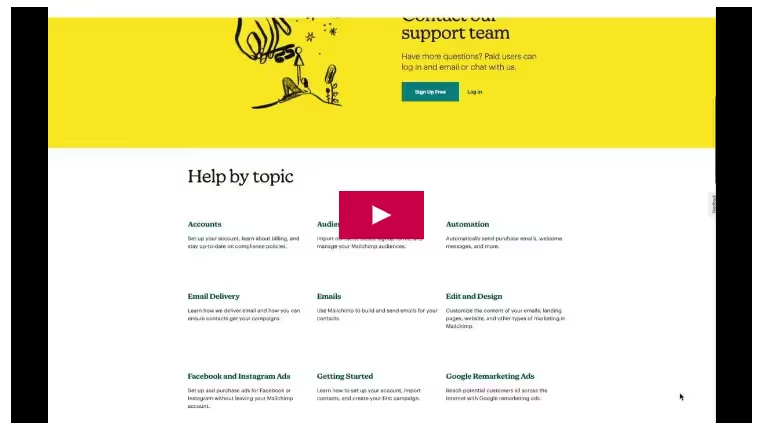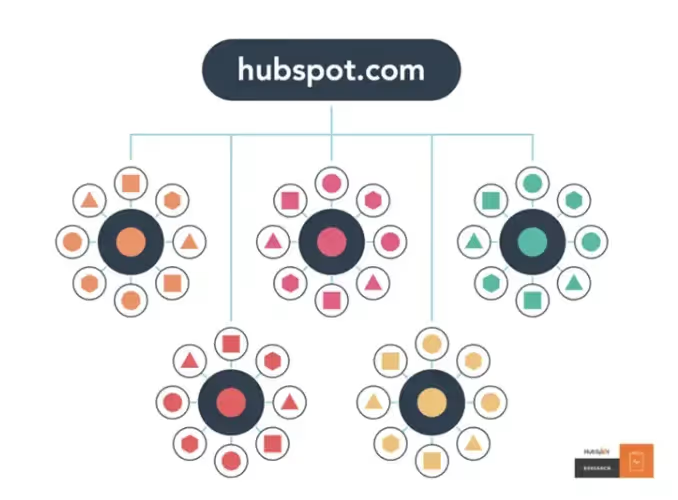Inbound Marketing: Personalization and Relevant Content

This article marks the close of our series on the best practices of Inbound, focusing on how personalization in marketing through relevant content can transform the experience of your customers and, at the same time, optimize your resources efficiently.
If you haven't had a chance to explore the first two articles yet, we suggest taking a look at them. In the Part 1, we commented on the value of data and the importance of consolidating it in one place, while in the Part 2, we dive into the strategy of activating data through automation. And don't miss this last piece that completes the puzzle.
Focus on self-service
In previous articles, we've mentioned FAQs and chatbots, but in this article, we'll focus on the pros and cons, as well as how to maintain a good self-service solution.
Offering your customers the option of self-service is an important part of eliminating friction points, helping customers to move forward in the customer journey. In fact, 76% of customers prefer to use self-service options rather than having to talk to someone on the phone (Forrester Research).
This is where the tool”Knowledgebase“comes on the scene. The knowledge base is very similar to regular company articles, but it's slightly different from typical content, since it doesn't necessarily have to be creative.
The most important thing is that the articles are informative and that the instructions are clear and easy for your customer to follow. Include bulleted lists, images, or GIFs and make sure to answer only one question per article.
A good way to divide your knowledge base is through people, products, or stages of customer journey. It should be easy to find the answer to the question, so if your articles aren't distributed in a logical segmentation, all your good intentions may be lost.
It may be advantageous to share links to articles on the website. Let's see, for example, how MailChimp has created an effective knowledge base, where you can search with free text, delve into different topics or contact support directly if you're still having problems:

Imagine that you have sold a solution of marketing automation to your contact from CRM. In the time after the sale, we can advantageously share relevant content related to the topic with our new customer “What is the onboarding process?” , “How do I track ROI?” , “How do I integrate other systems?” etc.
Many of the same links can be included within the marketing automation page so that the customer can find the answers to their questions on their own.

Therefore, a knowledge base is an effective tool for creating better customer service, but it also requires that it be constantly updated, both when new products are released and in relation to user feedback.
If an item receives a lot negative comments, you should update or delete it. If there are a lot of support tickets on a new topic, you should create a new article with more relevant content. It's not just a single project: the analysis of results and maintenance is at least as important as creating your knowledge base.
Topic clusters: SEO and content - a couple of strong partners
Relevant content isn't just important in relation to your communication with customers. Actually, it's relevant in terms of SEO and ranking in search engines.
In 2015, Google introduced RankBrain as part of its search algorithm. RankBrain is used for find synonyms and relevant words in searches, so that you don't just show results with the exact word you're looking for.
In practice, this means that Google is looking for other relevant content, in the form of links, to rank your page.
Los Topic Clusters or topic groups are a way of creating groupings of relevant content, each of which immerses itself in a specific topic. A group focuses on a relatively large topic and then has many sub-topics that make up different pages.
E.g. Can we have a main topic that is “Inbound Marketing” and sub-topics in the form of “Marketing Automation”, “Inbound Marketing Persona”, etc.

You can start with topic groups by creating a Pilar page central, which contains the main theme and has links to the different sub-topics.
By building such a structure, you reorganize the architecture of your website to have links between relevant content. Not only do you increase the ranking of your pages, but you also create a better experience for your customers, since it's easier to find relevant content.
Pillar pages are usually long (between 1500 and 3000 words) and voluminous, since they try to answer all the questions on a specific main topic. Your topic should be large enough to cover at least 20 blog posts.
Professional advice: each sub-topic must be strong enough to stand alone, but when linked to other relevant sub-topics, it adds value to your main topic.
A higher ranking is good for generating more traffic to your website, but we must remember that your customers are not search engines, they are people.
Topic groups are a way to create useful and positive experiences that improve your search engine rankings and user experience.
Relevant content and personalization in digital marketing
The last trend we want to highlight is the personalization of content in your marketing strategy. All of your content can be customized to a certain extent. A very simple example is having your website in different languages: a person from England will automatically see your page in English, while a person from Denmark will see it in Danish.
The same principle can be applied to other segmentations, for example, where in the customer journey the visitors of your website are found.
If it's their first time visiting your site, there's not much you can do other than show them your standard content. But if they've visited the page multiple times and maybe filled out a newsletter form or downloaded an e-book, then you have the opportunity to personalize and show them other content.
Someone who has never heard of you before (the beginning of the customer journey) has different priorities than someone who has been inside and has done enough research to consider whether they should choose your company or that of the competitor (the end of the customer journey).
In the beginning, the person needs to understand what services you offer, if there are other people who have the same problem as him and how your company can help. Here it will be more relevant to have links to your blogs, e-books and other content that describe what problems you can solve.
Instead, a person at the end of the customer journey needs to know why they should choose you over others, if they can trust your company, if you have the right experience, etc. Content such as customer reviews, case studies, links is more relevant here.
Personalize your content
Now you might be thinking, “Yes, that makes sense, but how do I personalize my content that way?” And this is where tools like HubSpot and 'Smart Content' they enter the scene.
In the first article, we talked about how important it is to collect all the data in one place, to be able to use it in all branches of the company.
If you have integrated your CRM system with your website, you can use the information in your database to personalize the content they see.
You can use information about the customer journey, country and language, mobile vs. desktop devices, source of potential customers, etc., and you also have the ability to create lists with your contacts and show specific content only for that list.

You can customize everything from text and images to buttons, forms and videos. In the image above, we have created a CTA that by default shows a button that links to our blog.
If the person is marked as “opportunity” in our database, you'll see a button with a link to book a demo. The CTA can then be used throughout the website, for example, on the home page or in blog posts.
The different stages of the customer journey are just one example of how you can use personalization. You can also use job titles, for example, for a marketing manager to view content about marketing automation and a sales manager to view content about sales strategies.
Both now and in the future, it's important for potential customers to feel like they're being served and that our content speaks specifically to them. The relevance and personalization of marketing content is one of the ways in which we can create a better experience for our users and, ultimately, also generate higher conversions for our company.
Conclusion
At Novicell, we understand the importance of self-service and creating a knowledge base with relevant content to improve the customer experience. In addition, we highlight the relevance of personalization in digital marketingl to adapt to the needs of visitors at various stages of the customer journey and improve search engine rankings. These strategies are essential for providing exceptional service and increasing the online presence of your business. Contact us and discover how we can help you implement these effective practices in your company.
Cómo podemos ayudarte
Consulta los servicios con los que te ayudaremos a conseguir tus objetivos digitales.
